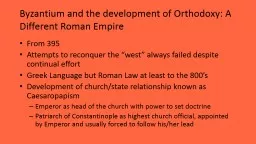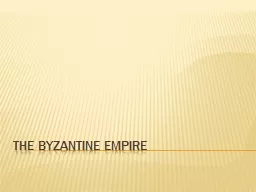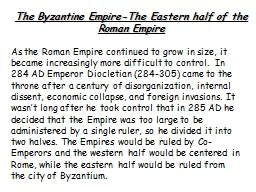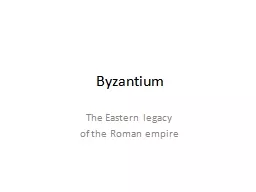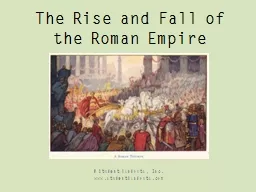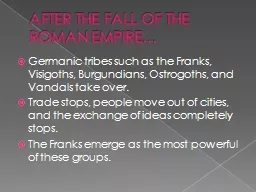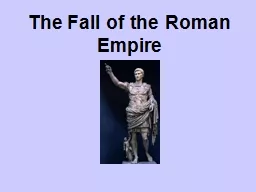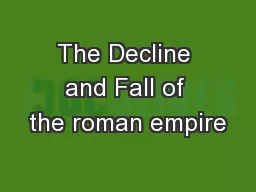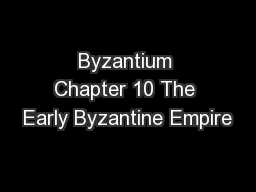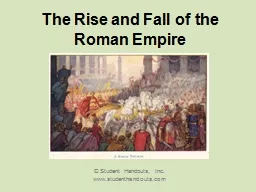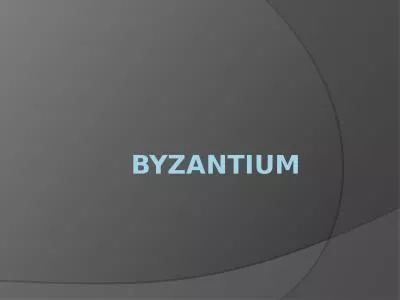PPT-Byzantium and the development of Orthodoxy: A Different Roman Empire
Author : test | Published Date : 2018-10-22
From 395 Attempts to reconquer the west always failed despite continual effort Greek Language but Roman Law at least to the 800s Development of churchstate relationship
Presentation Embed Code
Download Presentation
Download Presentation The PPT/PDF document "Byzantium and the development of Orthodo..." is the property of its rightful owner. Permission is granted to download and print the materials on this website for personal, non-commercial use only, and to display it on your personal computer provided you do not modify the materials and that you retain all copyright notices contained in the materials. By downloading content from our website, you accept the terms of this agreement.
Byzantium and the development of Orthodoxy: A Different Roman Empire: Transcript
Download Rules Of Document
"Byzantium and the development of Orthodoxy: A Different Roman Empire"The content belongs to its owner. You may download and print it for personal use, without modification, and keep all copyright notices. By downloading, you agree to these terms.
Related Documents

